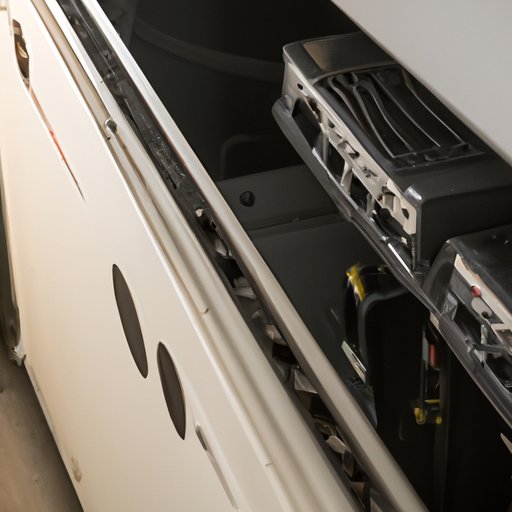Introduction
When your freezer stops freezing, you may be wondering what to do next. It can be quite stressful when your food starts to thaw out, but don’t worry – there are several easy steps you can take to try and fix the problem yourself. This article will provide some useful information on what to do if your freezer is not freezing.

Check the Temperature Setting and Adjust If Necessary
The first thing to do when your freezer isn’t freezing is to check the temperature setting. Most freezers have a dial or digital display that lets you adjust the temperature. You should aim for a temperature of 0°F (-18°C) or lower. To check the temperature, you can use an appliance thermometer, which can be found at most hardware stores.
If the temperature is below 0°F (-18°C), then the issue could be something else. In this case, you will need to adjust the temperature setting. This can usually be done by turning the dial clockwise or pressing the “+” button on a digital display. Make sure to wait a few hours after adjusting the temperature before checking the thermometer again.
Clean the Condenser Coils
The condenser coils are located on the back of the freezer and are responsible for removing heat from the interior of the freezer. Over time, these coils can become clogged with dust and debris, which can prevent the freezer from cooling properly. To clean the coils, you will need to unplug the freezer and use a vacuum cleaner with a brush attachment to remove any dust and debris. Be sure to wear gloves and safety goggles while doing this.
Once the coils are clean, plug the freezer back in and allow it to run for a few hours. Check the temperature again to see if the issue has been resolved.
Ensure Proper Airflow Around the Freezer
Good airflow is essential for a freezer to work properly. If the airflow is blocked or restricted, the freezer may not be able to cool efficiently. Common causes of poor airflow include furniture or appliances blocking the vents, a dirty or clogged air filter, or a buildup of ice inside the freezer.
To improve the airflow, start by making sure the vents are clear and free from obstructions. Then, check the air filter and replace it if necessary. Finally, check for any signs of ice buildup inside the freezer and defrost if necessary.
Inspect the Door Seals
The door seals on a freezer are designed to keep cold air in and warm air out. Over time, the seals can become worn or loose, which can cause cold air to escape. To inspect the door seals, look for any signs of wear and tear such as cracks, tears, or gaps. If the seals are damaged, they will need to be replaced.
If the seals appear to be in good condition, then you can try wiping them down with a damp cloth to remove any dirt or debris. This should help to improve the seal and reduce the amount of cold air escaping from the freezer.
Check the Defrost System
The defrost system is responsible for removing any ice buildup inside the freezer. If the defrost system is not working properly, then the freezer may not be able to maintain a consistent temperature. To check the defrost system, you will need to inspect the thermostat, heater, and timer.
If any of these components are defective or not functioning correctly, then they will need to be replaced. It is best to consult the owner’s manual or call a professional technician for help with this step.

Call a Professional Technician for Help
If none of the above steps have resolved the issue, then it may be best to call a professional technician for help. A technician can diagnose the problem and recommend the best course of action. They can also identify any underlying issues that may be causing the problem.
When looking for a technician, make sure to do your research and read reviews to find someone who is reliable and experienced. Ask friends and family for recommendations if possible.
Conclusion
If your freezer is not freezing, there are several steps you can take to try and fix the problem yourself. These include checking the temperature setting, cleaning the condenser coils, ensuring proper airflow, inspecting the door seals, and checking the defrost system. If these steps don’t resolve the issue, then it may be best to call a professional technician for help.
Before attempting any repairs, make sure to read the owner’s manual and take all necessary safety precautions. With the right tools and knowledge, you should be able to get your freezer running smoothly again in no time.


